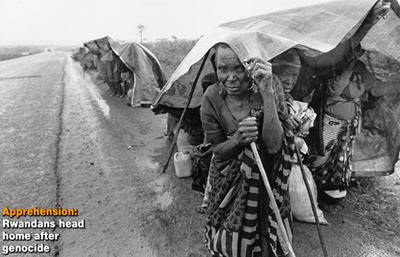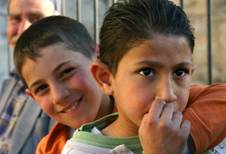dept | resources | glossary | credits | feedback | help | search |
|||
 |
|||

|
|||
 |
|||
| The Harriet and Robert Heilbrunn Department of Population and Family Health |
|||
 |
|||
| intro | definitions | international legal instruments | basic facts | standard responses | major actors | conclusion | exam |
|||
International legal instruments that apply in situations of forced migrationIn this section you will gain a basic understanding of the international legal instruments relevant for situations of forced migration. International Human Rights LawsIn general, international human rights laws such as The Universal Declaration of Human Rights, the Convention on the Elimination of all forms of Discrimination against Women and the Convention on the Rights of the Child are relevant to forced migrants. These instruments will be covered in detail in the Human Rights Module which should be referred to for further detail. Another excellent resource is the Columbia University Human Rights Portal. Here, in the Forced Migration Module, we will look primarily at international humanitarian law and refugee law which are specifically relevant to forced migration and health.
International Humanitarian Law (IHL) The Geneva Conventions
As of June 1993, 178 states were signatories to the 1949 Conventions, with 61 ratifications. The 1996 and 1998 Geneva Convention Tribunals
Some rules of IHL as specified by the Geneva ConventionsPersons hors de combat (outside of combat/ non-combatant) and those who do not take a direct part in hostilities are entitled to respect for their lives and their moral and physical integrity. They shall in all circumstances be protected and treated humanely without any adverse distinction. It is forbidden to kill or injure an enemy who surrenders or who is hors de combat. The wounded and sick shall be collected and cared for by the party to the conflict which has them in its power. Protection also covers medical personnel, establishments, transports and equipment. The Emblem of the Red Cross or the Red Crescent is the sign of such protection and must be respected. Captured combatants and civilians under the authority of an adverse party are entitled to respect for their lives, dignity, personal rights and convictions. They shall be protected against all acts of violence and reprisals. They shall have the right to correspond with their families and to receive relief. Everyone shall be entitled to benefit from fundamental judicial guarantees. No one shall be held responsible for an act he/she has not committed. No one shall be subjected to physical or mental torture, corporal punishment or cruel or degrading treatment. Parties to a conflict and members of their armed forces do not have an unlimited choice of methods and means of warfare. It is prohibited to employ weapons or methods of warfare of a nature to cause unnecessary losses or excessive suffering. Parties to a conflict shall at all times distinguish between the civilian population and combatants in order to spare civilian population and property. Neither the civilian population as such nor civilian persons shall be the object of attack. Attacks shall be directed solely against military objectives. Refugee LawThe 1951 Refugee Convention The process of developing a body of international law, conventions and guidelines to protect refugees began in the early part of the 20th century under the League of Nations, the predecessor of the United Nations. It culminated on 28 July 1951, when a special UN conference approved the Convention relating to the Status of Refugees. On December 4, 1952 Denmark became the first state to ratify the Convention. Since then, a total of 147 states have acceded to one or both of the UN instruments. This first instrument was limited to protecting mainly European refugees in the aftermath of World War II, but a 1967 Protocol expanded the scope of the Convention as the problem of displacement spread around the world. The Convention clearly spells out who is a refugee and the kind of legal protection, social rights and other assistance he or she should receive from states in the document. It also defines a refugee's obligations to host governments and certain categories of persons, such as war criminals, who do not qualify for refugee status. The Convention defines a refugee as: "A person who is outside his/her country of nationality or habitual residence; has a well-founded fear of persecution because of his/her race, religion, nationality, membership in a particular social group or political opinion; and is unable or unwilling to avail himself/herself of the protection of that country, or to return there, for fear of persecution." Guiding principles for IDPThe 1998 Guiding Principles on Internal Displacement Completed in 1998 by a team of international legal experts led by the noted Sudanese scholar, Dr Francis Deng, and under the direction of the UN Secretary-General, the Guiding Principles (GPs) represent the first international standards for internally displaced persons (IDPs). The GPs comprise 30 principles, which define the rights of IDPs and the obligation of both governments and rebel groups to protect them. Although the Guiding Principles do not constitute a binding legal instrument like a treaty, the 30 principles do, according to Deng, "address all phases of displacement—providing protection against arbitrary displacement, offering a basis for protection and assistance during displacement, and setting forth guarantees for safe return, resettlement and reintegration.“ continue to... Basic facts about forced migrants in the world today |
|||
 |
|||



